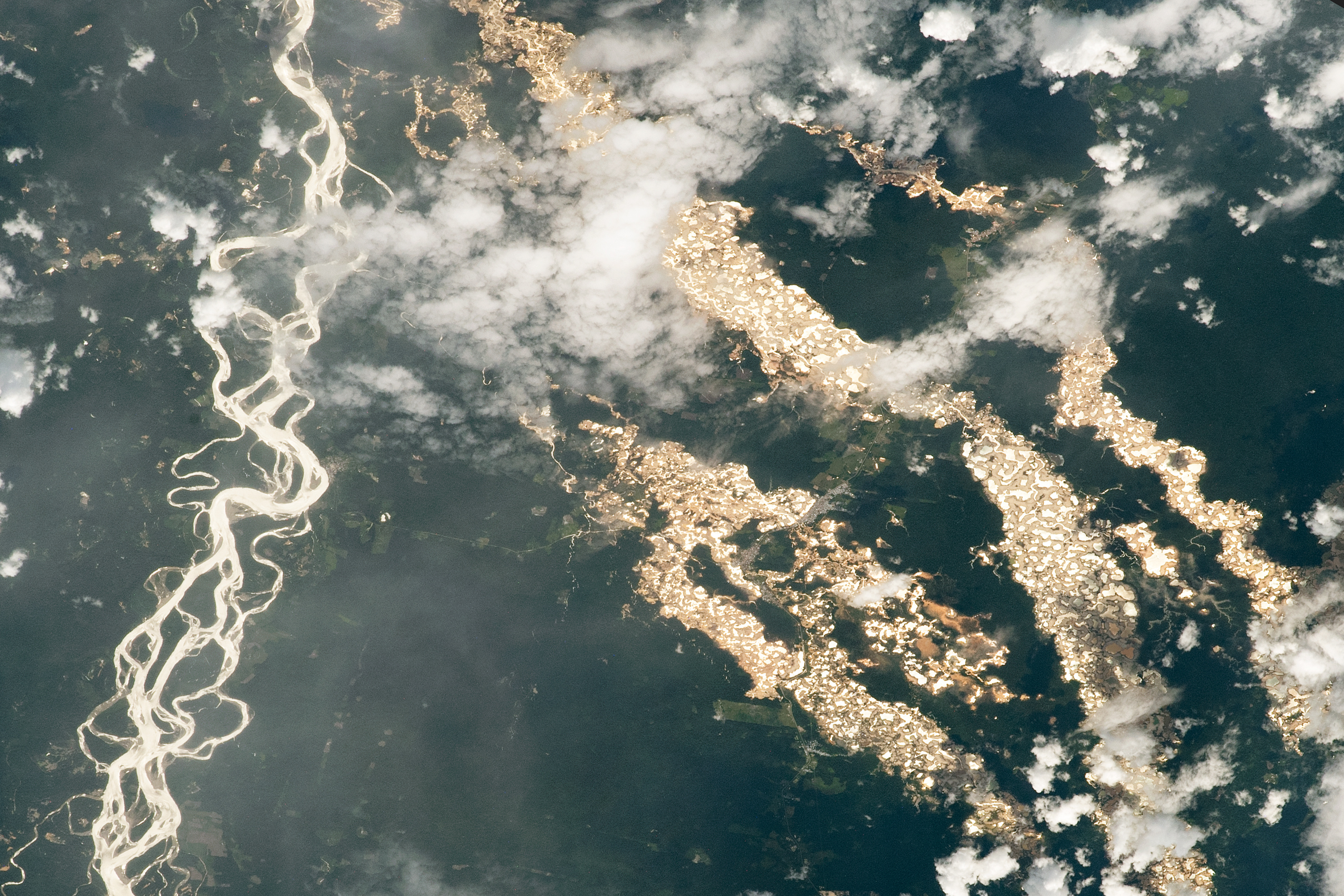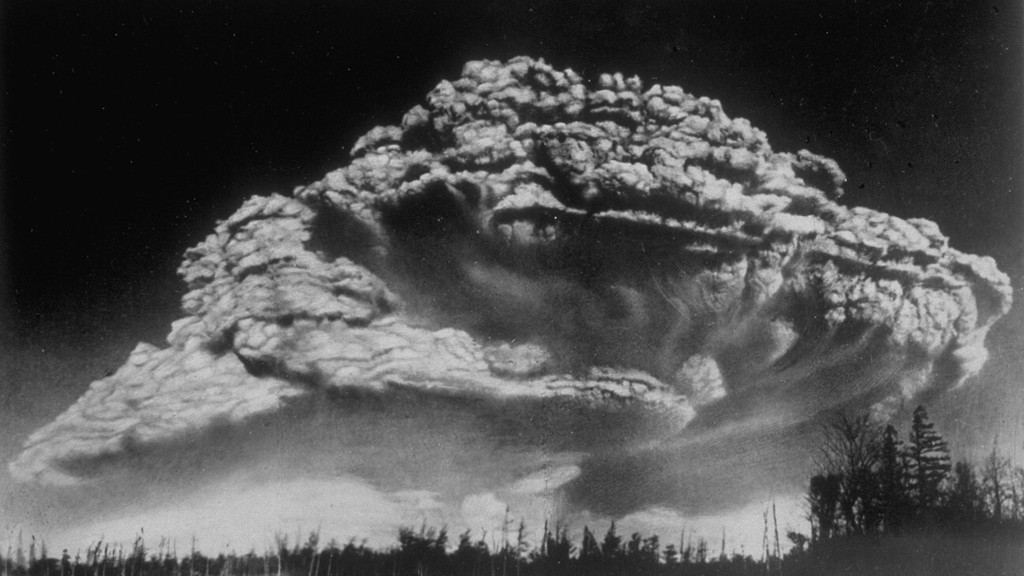'Rivers of gold' rush through the Peruvian Amazon in stunning NASA photo
They look like pools of pure gold; they're actually pits of toxic mud.

The Peruvian Amazon glitters like gold in a gorgeous new photo taken aboard the International Space Station.
While that glow is just sunlight reflecting off hundreds of pits of muddy water, there is plenty of gold in them thar hills. Each glistening pool is a gold-prospecting pit, according to NASA's Earth Observatory website, likely dug by independent miners looking to unearth some of the Amazon's ancient treasures.
"Each pit is surrounded by de-vegetated areas of muddy soil," Justin Wilkinson, a grant specialist at Texas State University, wrote for Earth Observatory. "These deforested tracts follow the courses of ancient rivers that deposited sediments, including gold."
Peru's Madre de Dios state, shown in this picture, is home to one of the largest independent gold mining industries on Earth, Wilkinson wrote. As many as 30,000 small-scale miners (working outside of government regulations) prospect illegally in the area, tearing up the rainforest with excavators and dump trucks in order to unearth the gold underneath.
Illegal mining can be a boon to impoverished workers in Madre de Dios, but a detriment to the Amazon; according to a 2011 study in the journal PLOS One, gold mining is the single greatest cause of deforestation in the region.
Incredible Earth: $22.99 at Magazines Direct
The planet we live on is a remarkable place. But have you ever wondered how or why these things occur? How the Earth was made? How we predict the weather? How fossils form? What causes earthquakes or which animals glow in the dark? "Incredible Earth" reveals answers to these questions and more on a thrilling journey through everything you need to know about our world — and with gorgeous photography and insightful diagrams along the way!
These unregulated operations also pose a risk to local communities. Miners mix sediments with boiled mercury in order to separate gold from other minerals, according to Nature.com. As a result, up to 55 tons (50 metric tons) of mercury end up in rivers or the atmosphere every year. Locals who eat a lot of fish from these polluted rivers are more than three times as likely to have mercury poisoning than non-fish-eaters, a 2012 PLOS One study found.
But from space, these harsh realities blur out of focus. For the astronaut who took this photo on Dec. 24, 2020, the world far below was just a river of gold.
Get the world’s most fascinating discoveries delivered straight to your inbox.
Originally published on Live Science.

Brandon is the space / physics editor at Live Science. With more than 20 years of editorial experience, his writing has appeared in The Washington Post, Reader's Digest, CBS.com, the Richard Dawkins Foundation website and other outlets. He holds a bachelor's degree in creative writing from the University of Arizona, with minors in journalism and media arts. His interests include black holes, asteroids and comets, and the search for extraterrestrial life.



